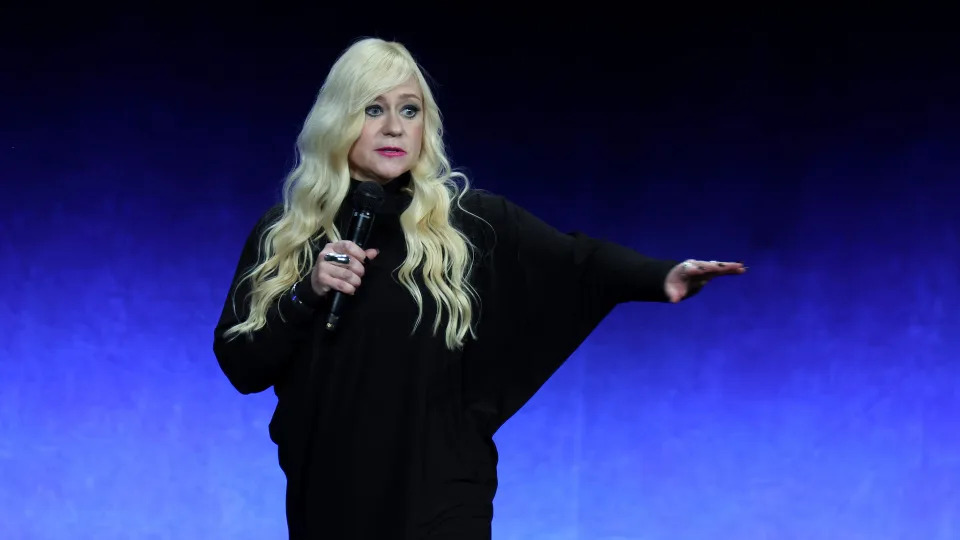
Opening soon in a theater near you are “Run Lola Run,” “Interstellar,” “Hereditary,” “Split,” and “Spirited Away.” They join fellow comeback kids “Oldboy,” “Stop Making Sense,” “Coraline,” “Amelié,” and Pixar’s pandemic-era films making their theatrical returns.
Last year’s strikes can take credit for some of this nostalgia: With distributors forced to delay films, theaters are desperate for product. However, desperation is not the only mother of this invention. A24, Neon, and other specialty distributors are treating re-releases as a way to reach younger audiences.
Last year, Neon re-released Park Chan-wook’s 2003 film “Oldboy” to $2.1 million worldwide. At a CinemaCon panel April 8, Neon distribution president Elissa Federoff credited its success to a young audience eager to see it on a big screen for the first time. “What is old is new for these younger audiences,” she said.
A24 is reaching into its own library to bolster its brand, rereleasing older hits like “Ex Machina” and “Uncut Gems.” With minimal advertising and a short lead time, these films could help Gen Z discover these films and become more inclined to check out the next A24 release.
Also new: Revivals are traditionally the stuff of under-appreciated B-movies or midnight screenings at repertory houses. However, major exhibitors are now seeing opportunity in supporting specialized re-releases. Those older specialized audiences remain sorely missed, and so are some of the key theaters they once attended. Mainstream theaters need to seize every opportunity that might get people back in the moviegoing habit.
“[For] some moviegoers, this may be the reason they go to a movie theater for the first time in a long time,” Comscore senior analyst Paul Dergarabedian told IndieWire. “And while in the theater, they might get excited to see more re-releases or other upcoming films. There’s a halo effect.”

Focus Features distribution president Lisa Bunnell, who also appeared on the CinemaCon panel, said young audiences drove the opening weekend of Wes Anderson’s “Asteroid City,” which saw an impressive $131,667 per-screen average. It’s a crowd Focus needs to court if they’re going to care about upcoming titles “The Bikeriders,” “Conclave,” or “Nosferatu.”
“We all have our own insider programs,” Bunnell told IndieWire. “It’s about getting people to understand not only your current films but your past films and that’s something we do all the time on our Focus Insider site. So we will be talking about ‘Shaun of the Dead’ and its anniversary, ‘Dazed and Confused’ and its anniversary. We make sure that we spotlight not only who we are now but what we were in the past.”
Some multiplex chains are also hiring people to manage special events and premieres that can help smaller films, partnering with distributors like Blumhouse and A24 on theater takeovers and offering screening perks to loyalty club members designed to bolster specialty cinema.
On the CinemaCon panel, Bunnell floated the idea of promoting Wednesdays nationwide as the day to see specialized cinema. It could be a change to spotlight new and old movies from distributors like Searchlight, Focus, Neon, Bleecker Street, and offer them at a discounted rate. (On Wednesday, April 3, Neon offered tickets to “Immaculate” for $6.66. Federoff said the stunt earned on par with a normal day but brought in twice as many people.)
To make something like that work, theaters and distributors will have to meet each other halfway. Exhibitors want more exclusive pre-show content, the ability to screen movies in advance (to plan their advance marketing strategies), and to understand the distributors’ rollout plan so they can provide the movie with runway.
For the distributors, Bunnell and Federoff said on the panel they need more exposure for their films on theaters’ websites — and they need theaters to show patience in letting these movies build word of mouth.
“If you put ‘Poor Things’ in 3,000 theaters to start, it would’ve died,” Bunnell said. “If you put ‘Everything Everywhere All at Once’ into 3,000 theaters, it would’ve died. Nobody would’ve understood what it’s about. You need time, you need patience, and you need an incredible response to sometimes drive people to theaters.”
Speaking to press at CinemaCon, National Association of Theater Owners president Michael O’Leary said communication between theaters and distributors is trending in the right direction. Exhibitors are urging distributors to use a theater’s marketing arm to better tap into local audiences — a group that exhibitors would know better than distributors. They’re starting to listen.
“Having that type of conversation happen is a huge step forward,” O’Leary said. “They seem insignificant in the abstract, but if you do that enough times, it becomes a habit, and you start to see some lift in the market.”